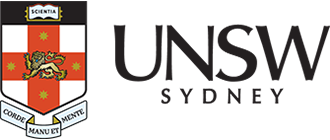PicoQuant MicroTime 200 STED

Description
The PicoQuant MicroTime 200 STED is a highly versatile time-resolved fluorescence microscope designed for single-molecule and advanced fluorescence research. It integrates key functionalities such as fluorescence lifetime imaging microscopy (FLIM), fluorescence correlation spectroscopy (FCS), and, with the addition of Stimulated Emission Depletion (STED) microscopy, offers super-resolution capabilities for imaging at the nanometre scale.
Specifications
-
20x Objective (UPLFLN 20x/0.40)
- This objective has a numerical aperture of 0.40 and is designed for use with air as the medium.
60x Water Immersion Objective (UPLSAPO 60x/0.64 W)
- This objective has a numerical aperture of 0.64 and is designed for use with water as the medium.
100x Oil Immersion Objective (UPLSAPO 100x/1.40 OIL)
- This oil immersion objective offers a high numerical aperture of 1.40 for detailed imaging and uses oil as the imaging medium.
-
- Pulsed diode lasers with repetition rates up to 80 MHz: Available at wavelengths of 443 nm, 479 nm, 510 nm, and 638 nm.
- For STED microscopy: Excitation at 595 nm and 640 nm, with a 765 nm STED depletion laser.
-
rapidFLIM
- 2-channel detection with two PMA Hybrid detectors.
FLIM
- 4-channel detection featuring two PMA Hybrid detectors and two SPAD detectors.
STED
- 2-channel detection using red-sensitive SPAD detectors
- 2-channel detection with two PMA Hybrid detectors.
Applications
- Fluorescence lifetime imaging (FLIM)
- Fluorescence correlation spectroscopy (FCS)
- Super-resolution microscopy (STED)
- Single-molecule detection
- FRET studies (Förster Resonance Energy Transfer)
Instrument location
Katharina Gaus Light Microscopy Facility
Room LG24, Lower Ground
Lowy Cancer Research Centre (C25)
UNSW Sydney, NSW 2033
Phone: 02 9065 5306
Email: KGlmf@unsw.edu.au
Dr Alex Macmillan
-
Email
alex.macmillan@unsw.edu.au
Dr Michael Carnell
-
Email
m.carnell@unsw.edu.au
Parent facility
Explore more instruments, facilities & services
Our infrastructure and expertise are accessible to UNSW students and staff, external researchers, government, and industry.


